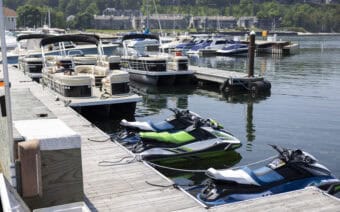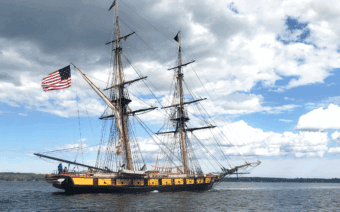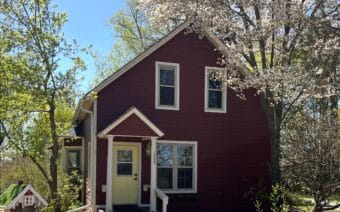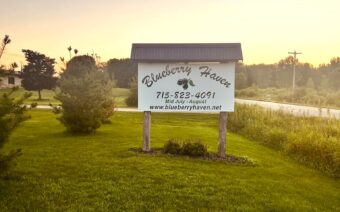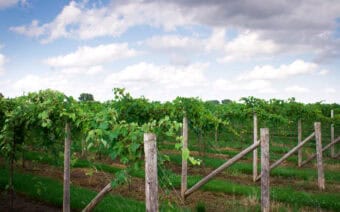
February 10, 2025
GREEN BAY – The Children’s Museum of Green Bay has long sought to expand its visitors’ minds.
Now, Executive Director Toni Burnett said the museum itself is seeking expansion.
As capacity issues continue to “crop” up, Burnett said the seeds have been planted for an agricultural solution: Pagel’s Ponderosa Barn.
The broad side
Per the official project scope, the 16,000-square-foot expansion will double the museum’s space, creating more room for exhibits, programs and family friendly amenities to serve more visitors and increase accessibility.
Burnett said the improvements will also double the museum’s capacity, with a current maximum of 300 visitors – “and there are many, many days when we get that number.”
Beyond the additional space itself, Burnett said accommodating more guests would also call for additional high-quality exhibits to provide developmental learning experiences.
Pagel’s Ponderosa Barn, per its scope, will include:
- A farm and dairy exhibit to educate children on Wisconsin’s agricultural roots and foster a deeper understanding of farming, food production and sustainability
- A trades and training exhibit and STEAMworks Lab, providing children a hands-on introduction to valuable career skills, empowering them to envision futures in trade professions and STEAM fields
- A hardware store where children can develop fine motor skills and build confidence
- A two-story climbing structure to support physical development, encourage risk-taking and boost confidence
- A flexible, traveling gallery space to keep the museum experience fresh and relevant with rotating exhibits
Thanks to sponsorship from Pagel’s Ponderosa – Wisconsin’s largest, private, family-owned dairy farm, according to its website – and a range of other sponsors and individual donors contributing to the museum’s impact, Burnett said the goal is to open the new space next winter.
Among the forthcoming exhibits’ education, she said kids will have the chance to learn the importance of caring for farm animals from an interactive cow and pig and learn what it takes to grow food by practicing baling hay, picking apples and experiencing a hydroponic greenhouse.
“Really, I wanted us to help our kids understand the plight of the farmer right now and how difficult it is to be a dairy farmer or a crop farmer,” she said. “It’s not easy, and we are learning a lot about the soil and how to care for our soil…. We’re going to talk about the sustainability in farming, dirt, careers, technology, big animal doctoring and technology and the role it plays in farming.”
Burnett said other topics will range from financial literacy to the process of milk production.
The inspiration for the exhibits’ theme, Burnett said, was not hard to find.
“Wisconsin is dairy and agriculture – that’s who we are,” she said. “I mean, we have, what, 65,000 farms in the State of Wisconsin? So, we are a big, big farming community.”
Burnett said kids will be invited to explore other regional industries related to water and manufacturing – but for the museum, a good education starts with having a good time.
“No. 1, yes – I want (an exhibit) to be fun, and I want the kids to be able to engage in it,” she said. “But (most) importantly, I want to make sure they’re coming out of it with some knowledge of our community.”
The museum through the years
Burnett said she took on the role of executive director 24 years ago.
“I had not been in many children’s museums at that point,” she said. “I took the opportunity to visit about 23 children’s museums across the country, and then we went about starting to make changes to the one that was in Port Plaza Mall downtown.”

Per its website (gbchildrensmuseum.org), the museum relocated to the Watermark project – still downtown – in 2012, and attendance ticked upward of 60,000 visitors that year.
With popularity increasing and no room for expansion, the museum moved to its current location (1230 Bay Beach Road) in 2019, with not just visitors but memberships ballooning as well, Burnett said, and staffing responding accordingly.
“There were no memberships prior, and all of a sudden, we had 400-500 members,” she said. “We started to get people in, and… went from a staff of two to a staff of 15, with five full-time directors and educators.”
Burnett said the new location, across the street from Bay Beach Amusement Park where “a couple million people a summer” visit, soon experienced “severe capacity issues,” though not unexpectedly.
“We knew we had to expand,” she said. “When we moved here from downtown, we knew it was just the start.”
The enduring, increasing popularity of the museum, Burnett said, is evidence of its programming connecting to the community, particularly when “there are seven children’s museums that are in close proximity.”
“I try not to do what others have done – we try to stay on the cutting edge of it,” she said. “Green Bay is very different from programming that you might find in Appleton or programming that you’ll find in Sheboygan or La Crosse.”
Burnett said as Wisconsin’s third-largest city, Green Bay has “a low-income level that is very different from Appleton or Madison or Sheboygan.”
“I always try to keep that in mind – that we try to level the playing field for kids,” she said. “When we look at a program, we really try to make sure that I can reach not only low-income children, but I can reach my own son or my friends’ children. Everything I look at here, I have to see it from three or four different levels and three to four different sets of eyes – and that makes this museum very unique.”
The programming, Burnett said, intentionally covers fields such as trades (Under Construction, The Auto Garage), liberal arts (The Imagination Station), health (The Digestive System, The Vet Clinic), sciences (Whoosh!, Splash!), public safety (The Fire Station), general life skills (The Farmers Market, The Diner, The Backyard Experience) and more.
Per the museum’s website, other programming includes year-round camps and mini-camps, monthly themes for learning, events tailored to children of different abilities and other outreach programs.
“(We’ve been able to do) 3D printing, and we can do robotics with the kids, and we can do virtual gaming,” Burnett said of the museum’s range. “We can do all kinds of stuff there… with kids who are four, or kids who are 13 years old. It allows us to really focus on all kinds of children – diversity-wise and age-wise – and really make a difference and be impactful with what the museum offers and provides.”
Increasing capacity, impact
With the expansion, Burnett said, will also come renovation and rearrangement, as the museum’s current building will serve as an “education center,” a location to host private celebrations and a homebase for staff, while the exhibits will primarily move into the new space.
Though the museum will be able to hold two times its current capacity, she said the expansion will make it “100 times better.”
“This new museum will be extraordinary,” she said. “It will take what we did downtown in 2012 and just blow it out of the water.”
A capital campaign to raise the necessary funding has raised more than $4 million for the project from the private sector, Burnett said.
“Now, we’re in the public campaign portion, where we’re looking to accept donations from the general public at large,” she said. “We’re still accepting donations and have a lot of companies and private asks out there, but we are now at a point where we are engaging the public and wanting them to be part of this campaign and making this new museum a reality.”
With new town exhibits, a traveling gallery that will change every six months, an expanded water gallery, a new Imagination Station, “a two-story toilet paper climber” and Pagel’s Ponderosa Barn that feels “just like stepping into a Wisconsin farm,” Burnett said she hopes the public will continue to support the project and push “this over the finish line.”
“The museum is a place where all children get to come to learn and play and just be kids in a very safe environment,” Burnett said. “It’s a place where we say, ‘children play to learn, and parents learn to play again.’ And I think that there’s nothing like us in Green Bay.”
Though it’s the museum’s many visitors who will enjoy the impact of the expansion the most, she said she is personally heartened and grateful for the community’s enthusiasm.
“From the bottom of my heart, all those people that have jumped on it already and are supporting this museum, I thank them so much for supporting our vision and seeing what can be,” Burnett said.
Visit gbchildrensmuseum.org for more information.
 Catch us if you ‘cran’
Catch us if you ‘cran’ Oshkosh’s Tubbs receives Sustainability Champion award
Oshkosh’s Tubbs receives Sustainability Champion award


